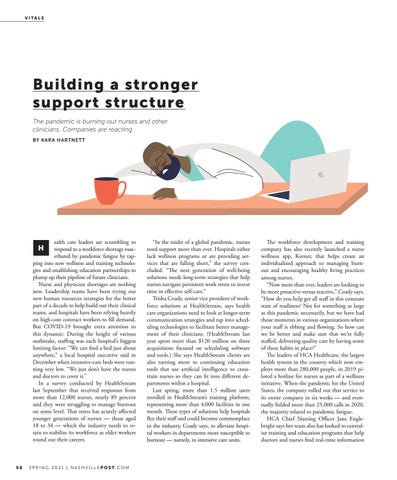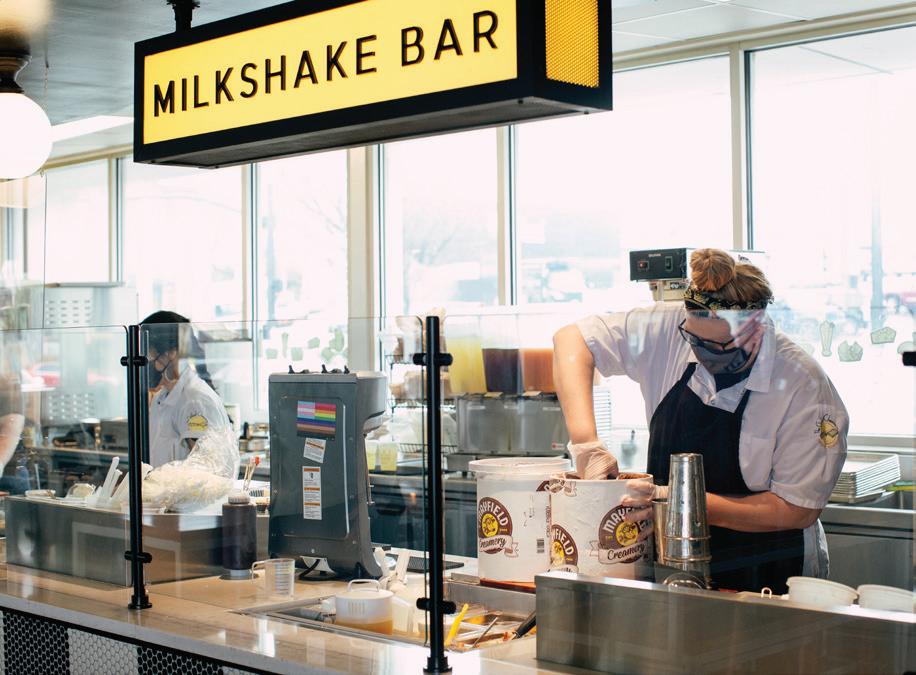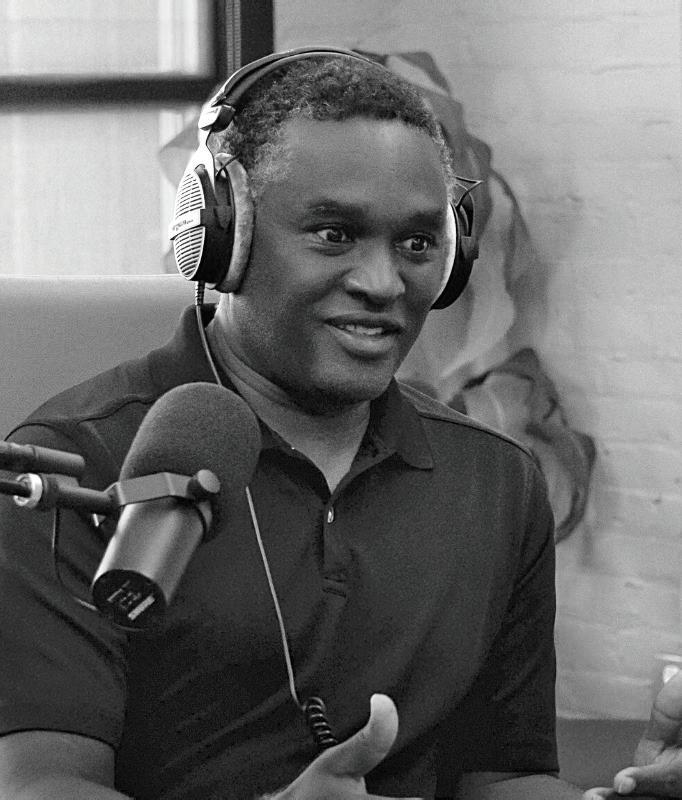VITALS
Building a stronger support structure The pandemic is burning out nurses and other clinicians. Companies are reacting. BY KARA HARTNETT
ealth care leaders are scrambling to respond to a workforce shortage exacerbated by pandemic fatigue by tapping into new wellness and training technologies and establishing education partnerships to plump up their pipeline of future clinicians. Nurse and physician shortages are nothing new. Leadership teams have been trying out new human resources strategies for the better part of a decade to help build out their clinical teams, and hospitals have been relying heavily on high-cost contract workers to fill demand. But COVID-19 brought extra attention to this dynamic: During the height of various outbreaks, staffing was each hospital’s biggest limiting factor: “We can find a bed just about anywhere,” a local hospital executive said in December when intensive-care beds were running very low. “We just don’t have the nurses and doctors to cover it.” In a survey conducted by HealthStream last September that received responses from more than 12,000 nurses, nearly 85 percent said they were struggling to manage burnout on some level. That stress has acutely affected younger generations of nurses — those aged 18 to 34 — which the industry needs to retain to stabilize its workforce as older workers round out their careers.
H
56
SPRING 2021 | NASHVILLEPOST.COM
“In the midst of a global pandemic, nurses need support more than ever. Hospitals either lack wellness programs or are providing services that are falling short,” the survey concluded. “The next generation of well-being solutions needs long-term strategies that help nurses navigate persistent work stress to invest time in effective self-care.” Trisha Coady, senior vice president of workforce solutions at HealthStream, says health care organizations need to look at longer-term communication strategies and tap into scheduling technologies to facilitate better management of their clinicians. (HealthStream last year spent more than $120 million on three acquisitions focused on scheduling software and tools.) She says HealthStream clients are also turning more to continuing education tools that use artificial intelligence to crosstrain nurses so they can fit into different departments within a hospital. Last spring, more than 1.5 million users enrolled in HealthStream’s training platform, representing more than 4,000 facilities in one month. These types of solutions help hospitals flex their staff and could become commonplace in the industry, Coady says, to alleviate hospital workers in departments more susceptible to burnout — namely, in intensive care units.
The workforce development and training company has also recently launched a nurse wellness app, Keener, that helps create an individualized approach to managing burnout and encouraging healthy living practices among nurses. “Now more than ever, leaders are looking to be more proactive versus reactive,” Coady says. “How do you help get all staff in this constant state of readiness? Not for something as large as this pandemic necessarily, but we have had those moments in various organizations where your staff is ebbing and flowing. So how can we be better and make sure that we’re fully staffed, delivering quality care by having some of these habits in place?” The leaders of HCA Healthcare, the largest health system in the country which now employs more than 280,000 people, in 2019 piloted a hotline for nurses as part of a wellness initiative. When the pandemic hit the United States, the company rolled out that service to its entire company in six weeks — and eventually fielded more than 25,000 calls in 2020, the majority related to pandemic fatigue. HCA Chief Nursing Officer Jane Englebright says her team also has looked to centralize training and education programs that help doctors and nurses find real-time information




